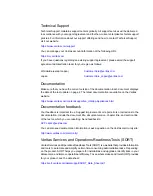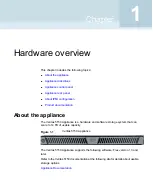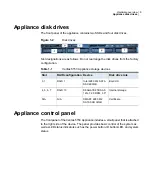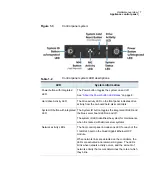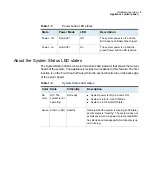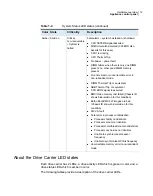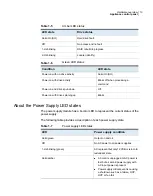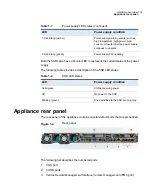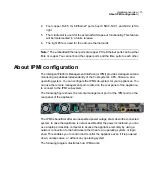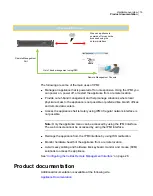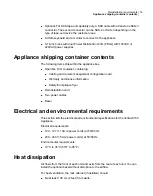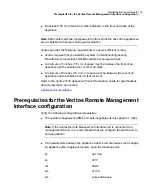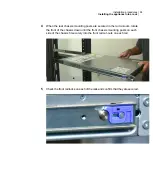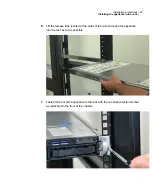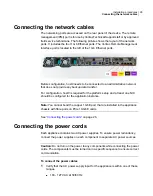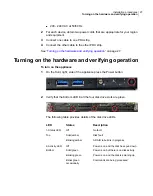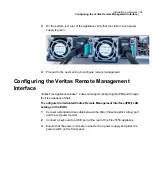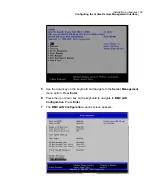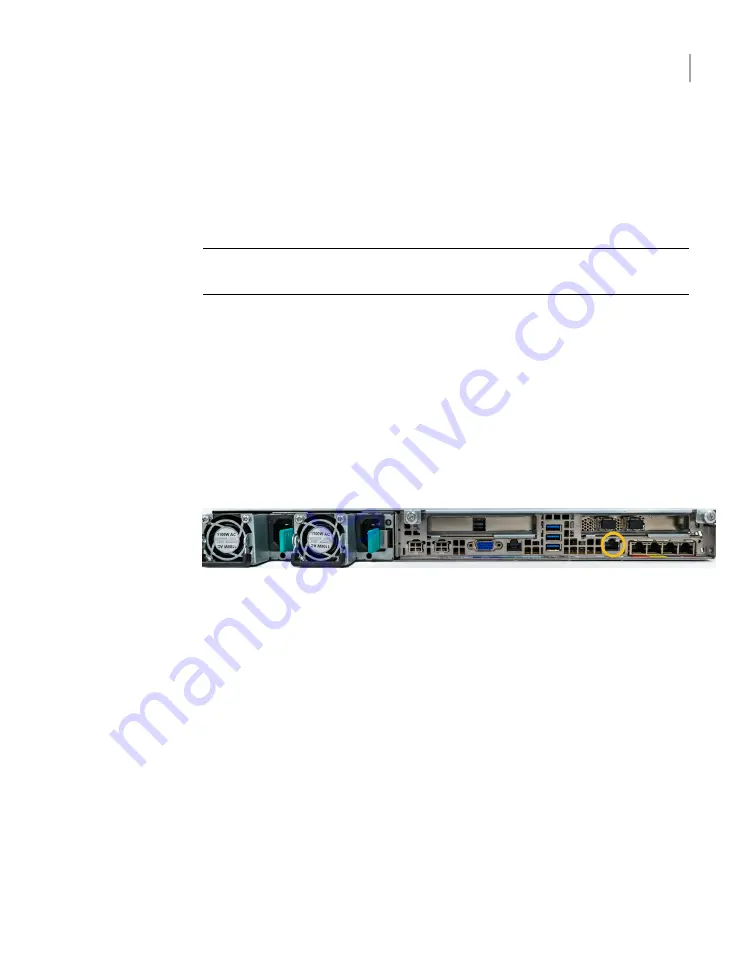
4.
Four copper, RJ45, 1Gb Ethernet* ports, host0, NIC0, NIC1, and NIC2, left to
right
5.
The middle slot is used for the external SAS tape-out functionality. This feature
will be implemented in a future release.
6.
The right PCIe is used for the add-on ethernet cards
Note:
* The embedded Ethernet ports are copper. PCIe Ethernet ports can be either
fibre or copper. You cannot bond the copper ports and the fibre ports to each other.
About IPMI configuration
The Intelligent Platform Management Interface (or IPMI) provides management and
monitoring capabilities independently of the host system's CPU, firmware, and
operating system. You can configure the IPMI sub-system for your appliances. You
can use the remote management port, located on the rear panel of the appliance,
to connect to the IPMI sub-system.
The following figure shows the remote management port (or the IPMI port) on the
rear panel of the appliance:
The IPMI is beneficial after an unexpected power outage shuts down the connected
system. In case the appliance is not accessible after the power is restored, you can
use a laptop or desktop computer to access the appliance remotely by using a
network connection to the hardware rather than to an operating system or login
shell. This enables you to control and monitor the appliance even if it is powered
down, unresponsive, or without any operating system.
The following diagram illustrates how IPMI works:
15
Hardware overview
About IPMI configuration



